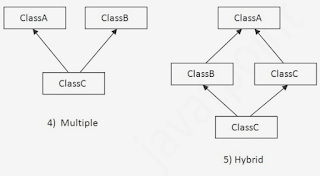Frankly Saying Nothing is Big it is just a opportunity given to programmers enabling many features.
The Main IDE software that you need to install is Netbeans
The Java Compromises of Various things .These things are as follow :-
1) JDBC
--for database management etc. For this there is whole complete subject in computer Science also.
--Anyway to implement its inbuilt function you use library
import.java.sql.*
--In this case beside netbeans you also need to download sql software which is a software that runs in cmd of window.
--Also you can say it is use to connect front end with backend
2)RMI-Remote Method Invocation
--This is use for eg you have two servers in e-commerce.if you want if in one server there is deduction of Rs 10/- then the same thing should be reflected back on another server.This synchronization is achieve by RMI
--This has a server like glassfish, appache tomcat
--you can design a calculator using a RMI
--here you use library
import.java.rmi.*
3)Servelets
--In this you do XML coding .
--This is use for
--Cookies
--Session tracking
--URL rewriting
4)EJB-Enterpreneur Java Beans
5)JSP-Java Server Pages
6)MVC/validator framework
7)Android
8)Struts
Some More Things that are there in java
--In class also there is a concept of class and inheritance
here you can saee class is HelloForm and HttpServlet is the inbuilt class from which function needs to be inheritate.Note while inheritance in java you have to use keyword extends
Anyway want to learn Java [Click Here]
The Main IDE software that you need to install is Netbeans
The Java Compromises of Various things .These things are as follow :-
1) JDBC
--for database management etc. For this there is whole complete subject in computer Science also.
--Anyway to implement its inbuilt function you use library
import.java.sql.*
--In this case beside netbeans you also need to download sql software which is a software that runs in cmd of window.
--Also you can say it is use to connect front end with backend
2)RMI-Remote Method Invocation
--This is use for eg you have two servers in e-commerce.if you want if in one server there is deduction of Rs 10/- then the same thing should be reflected back on another server.This synchronization is achieve by RMI
--This has a server like glassfish, appache tomcat
--you can design a calculator using a RMI
--here you use library
import.java.rmi.*
3)Servelets
--In this you do XML coding .
--This is use for
--Cookies
--Session tracking
--URL rewriting
4)EJB-Enterpreneur Java Beans
5)JSP-Java Server Pages
6)MVC/validator framework
7)Android
8)Struts
Some More Things that are there in java
--In class also there is a concept of class and inheritance
here you can saee class is HelloForm and HttpServlet is the inbuilt class from which function needs to be inheritate.Note while inheritance in java you have to use keyword extends
Anyway want to learn Java [Click Here]










